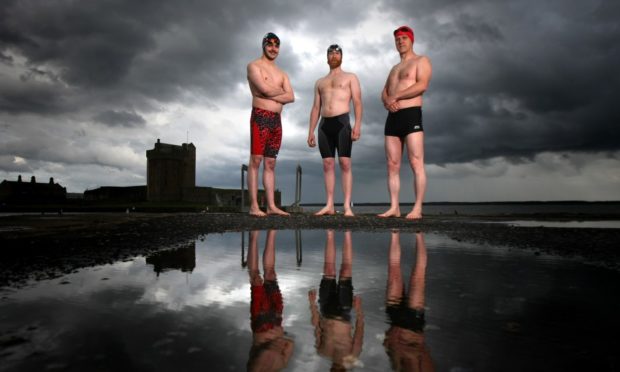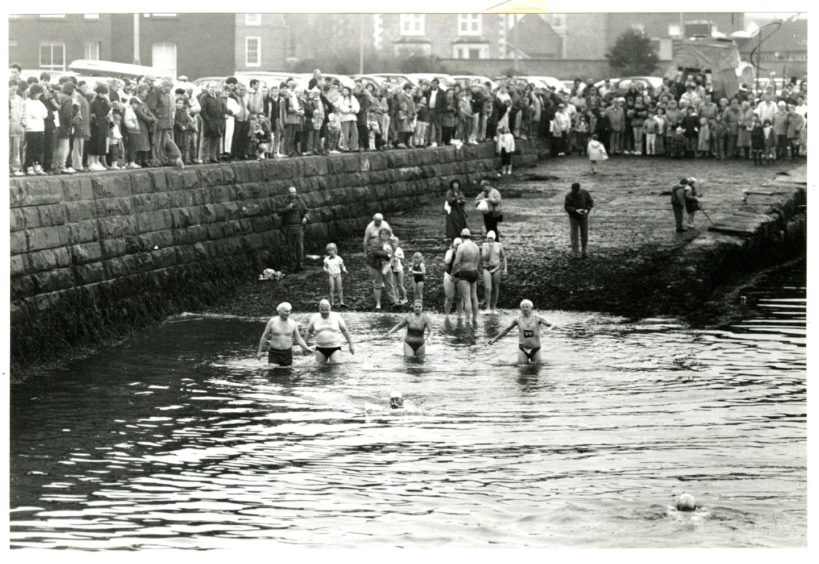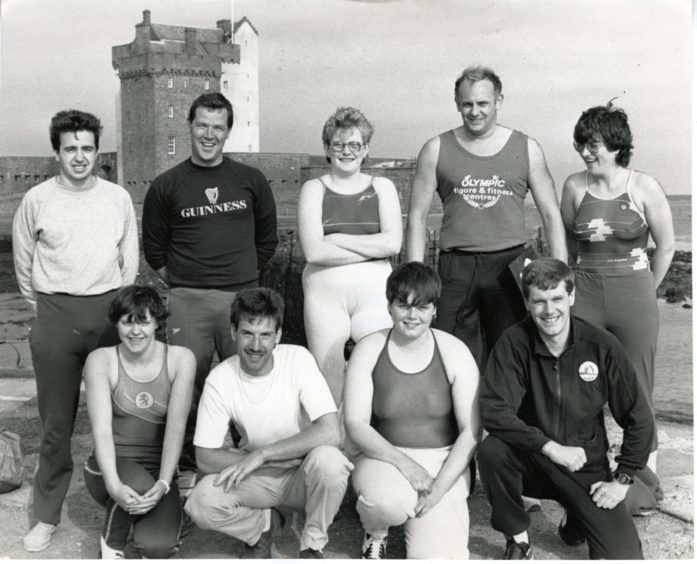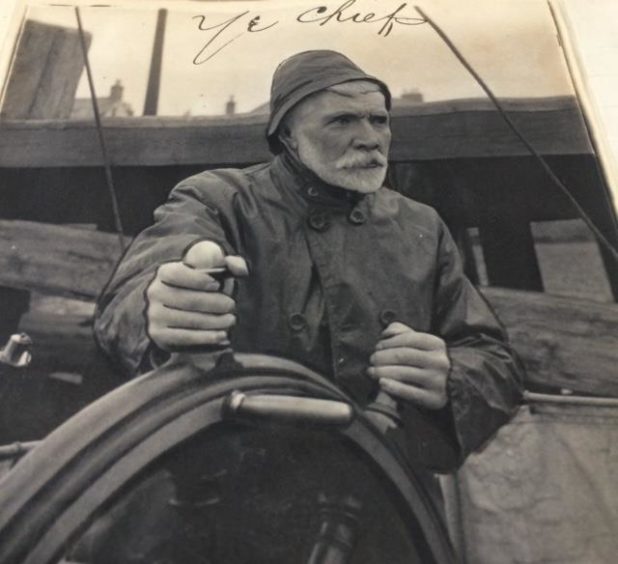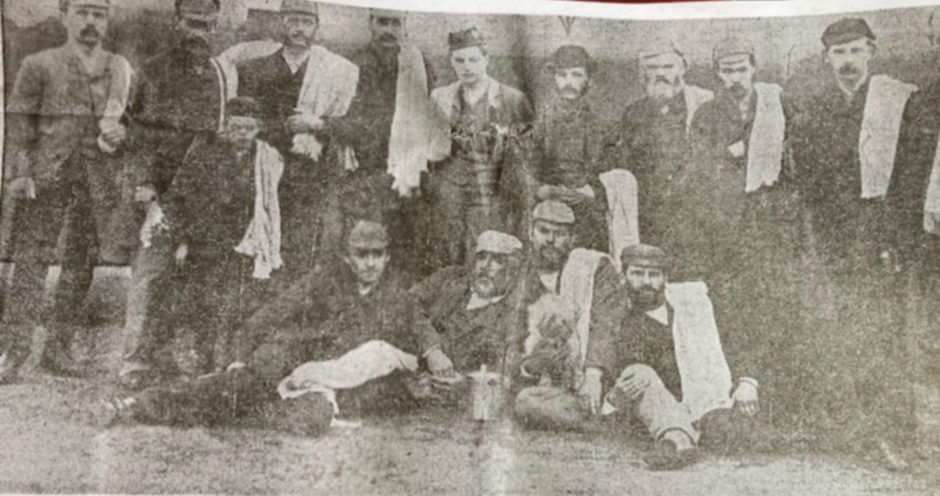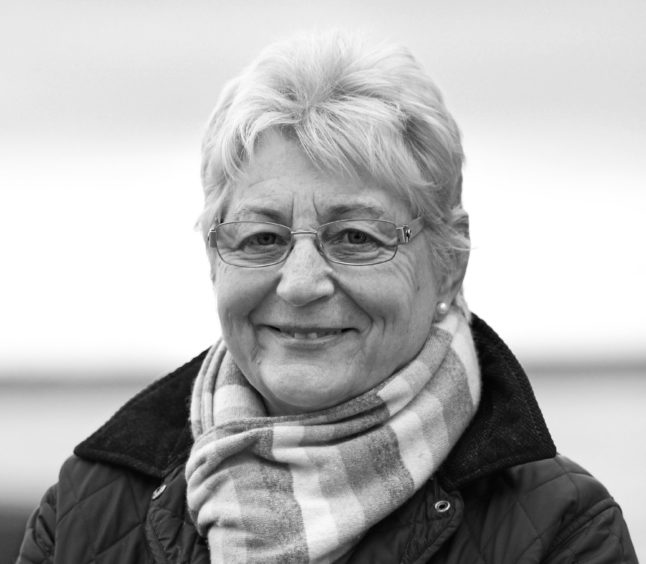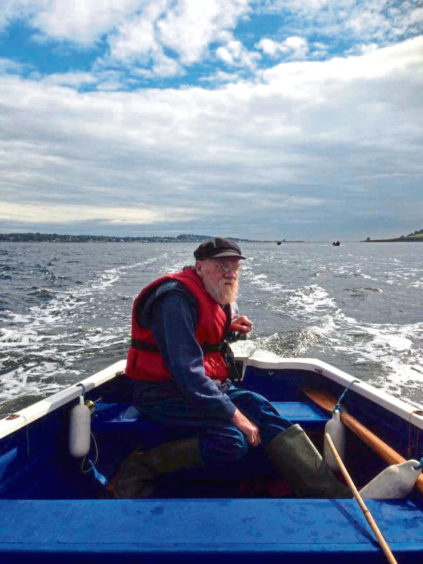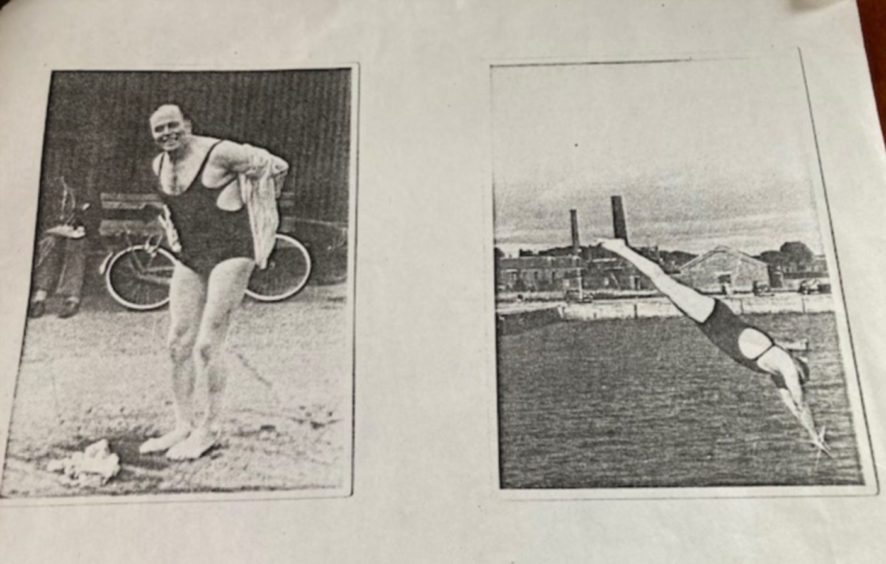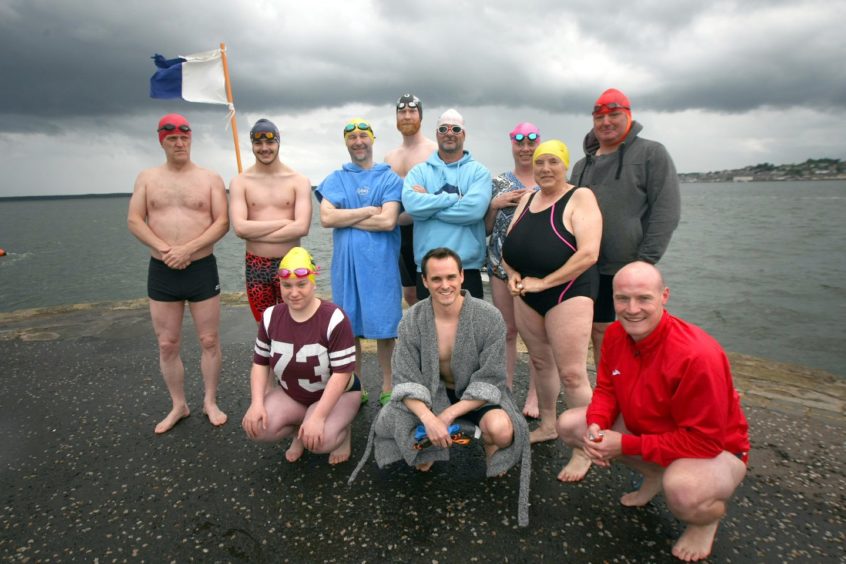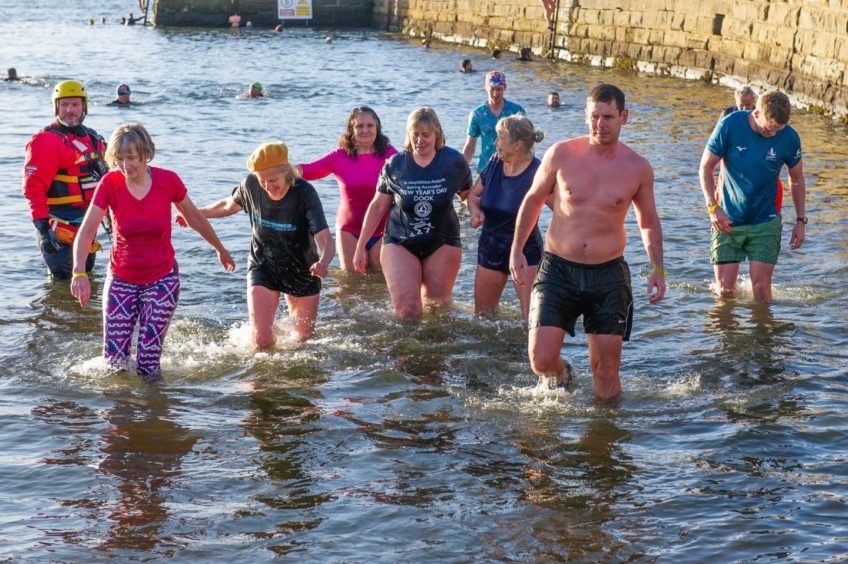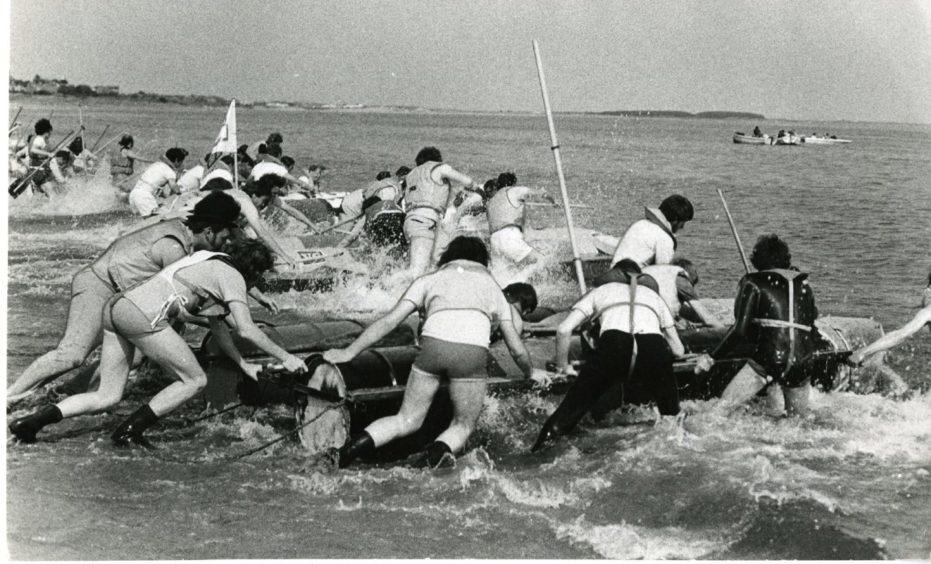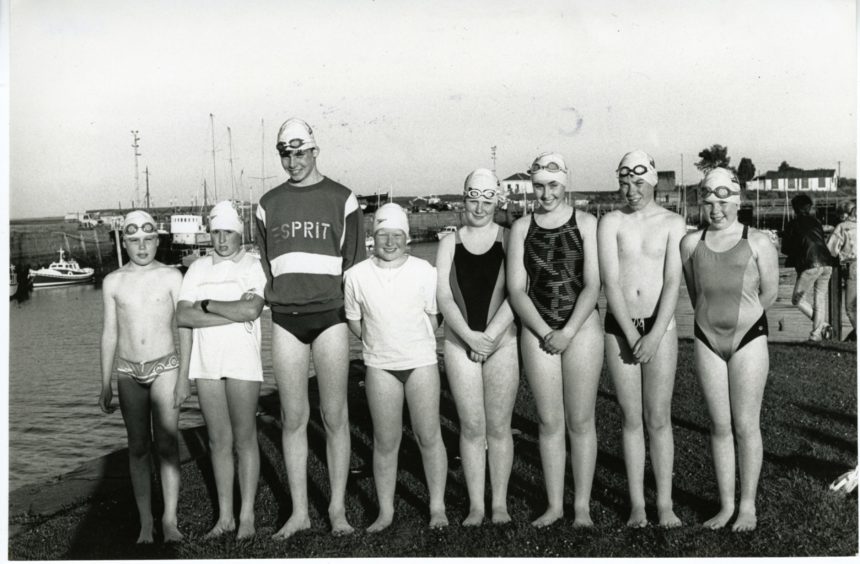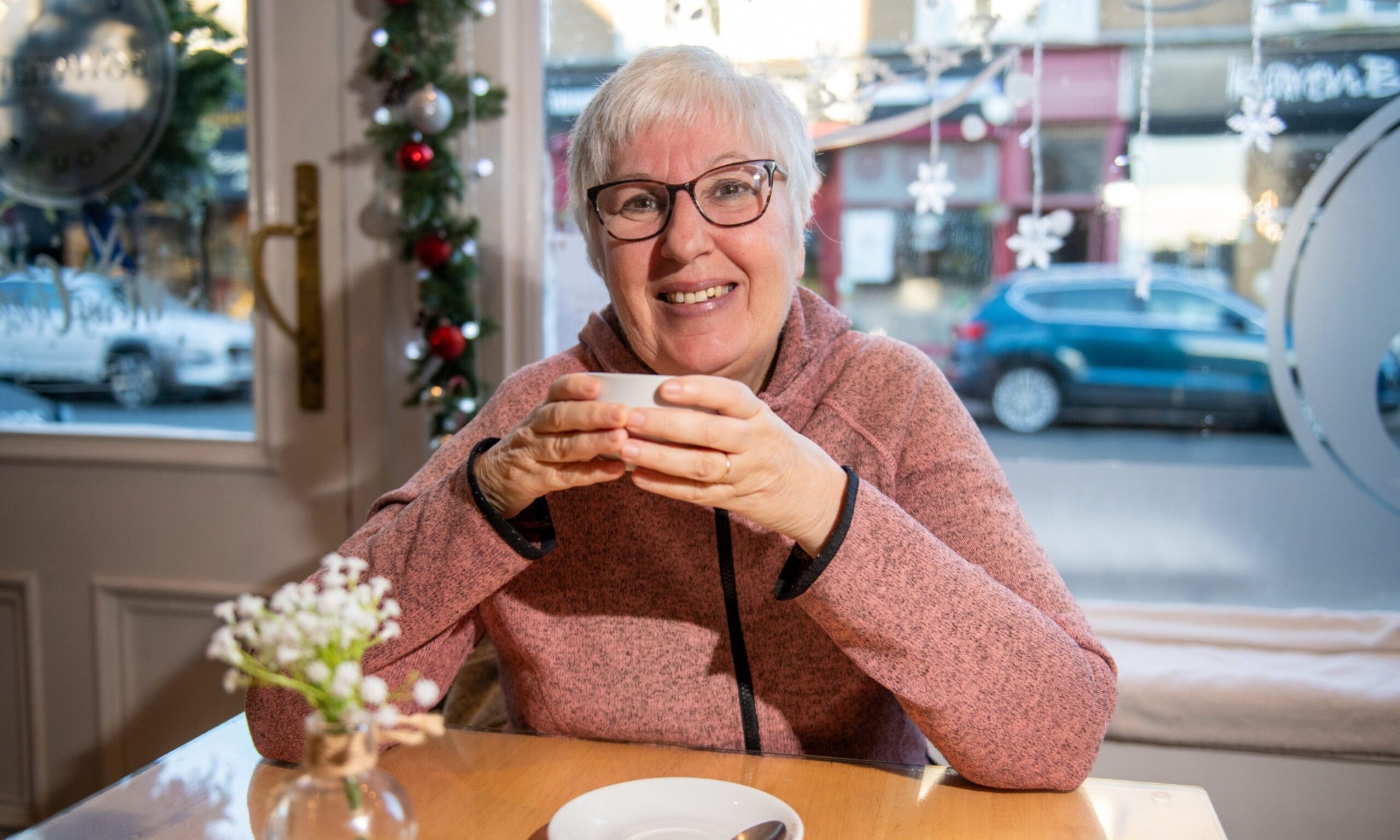Outdoor swimming club Ye Amphibious Ancients Bathing Association is a Broughty Ferry institution. Life president Joyce McIntosh is working on a book which charts its 137-year history. Gayle Ritchie finds out more.
Open water swimming is big news in 2021 with folk stripping off and diving into lochs, rivers and the sea for kicks left, right and centre. But for members of Broughty Ferry-based Ye Amphibious Ancients Bathing Association, taking a dip into icy waters is nothing new.
Indeed, swimmers, fondly known as “The Phibbies”, or Yeaaba, have been doing it for 137 years.
Founded in 1884 in the Ferry, the club is a voluntary organisation with more than 100 members.
The Phibbies retain a passion for open-water swimming which has been the defining feature of their identity since the early days when members would go for daily “dooks” off the Ferry pier into the River Tay.
As well as being something of an institution in Tayside, the organisation is unique in being the only one of its kind left in the country.
Today, the Phibbies host a variety of open water swim events, attracting swimmers from the across the UK, Europe and beyond.
Swims are organised for all ages and there are both fiercely competitive and non-competitive events.
The only really important Phibbies rule is: No wetsuits allowed!
The two major events are the Discovery Mile in summer, a mile-long race starting at Bridgeview Station restaurant and finishing just shy of Discovery Point, and the famous New Year’s Day Dook.
Yeaaba life president Joyce McIntosh is working on a book about the history of the club and hopes to have it completed by the end of the year.
“The club has a really fascinating history,” says Joyce, who became a member 42 years ago.
“Founder John Barrowman had a passion for open-water swimming and encouraged the locals to join him of a morning swimming off the east side of Broughty Ferry Castle.
“The club grew and was awarded 10 shillings from the burgh of Dundee to set up a changing room in a corrugated hut that was duly named ‘YE Bunk’.
“Membership was 9d or a shilling and there was no swimming on the Sabbath.
“The New Year’s Day Dook started as a celebration to welcome in the new year.”
Swimming teacher Joyce, 75, says members regard the Tay as their “swimming pool”, adding: “We’re unique in what we do as we don’t wear wetsuits, although for some championships we make provision for people who want to.”
The club is the only established one in the UK that boasts its own clubhouse, boats, engines and dedicated boatmen.
Joyce joined the Phibbies in 1979 when she was told swimming was the best form of exercise for her severely asthmatic son Robert. He soon progressed to swim open water for Scotland.
An elder at Barnhill St Margaret’s Church and a keen marathon runner, Joyce became the first woman with the title of Chief Ancient in 1990. She has swum in the sea, lochs and rivers of Scotland, as well as abroad.
“I thought the coldest water I’d been in was the River Tay,” she laughs.
“But when I was in Israel I swam in Lake Galilee – and that was absolutely freezing! The black flag (which indicates danger) was up so I probably shouldn’t have gone in.”
“Membership was 9d or a shilling and there was no swimming on the Sabbath.”
Joyce McIntosh
If anyone is aware of the potential risks of open-water swimming, Joyce is.
“In Scotland, you can walk into a loch and feel quite safe, but it could be much deeper than you think; there might be a massive drop or a shelf.
“You always need to assess the situation and bear in mind things like tides and wind speed.”
Why not just stick to a heated pool, you may well ask? It’s all about the challenge of braving the elements and getting that all-natural high, believes Joyce.
Cold-water swimming boosts your immune system and mood, burns calories, gets your blood pumping, and gives you a huge adrenalin rush.
And some scientists have speculated that it increases production of what’s known as brown fat, thought to be a healthy fat that burns energy and creates heat.
In essence, it’s good for the mind, body and soul.
What gives Joyce the biggest buzz is seeing people who might be anxious about open-water swimming giving it a bash.
“Seeing their faces when they achieve their goal is what drives me,” she reflects.
“Whether they swim for a couple of minutes or complete a challenge, their self-esteem is boosted.
“Lots of people who probably wouldn’t achieve on their own are able to pull together with the team and can do great things, like swimming the English Channel.”
While 137 years have passed since Yeaaba was born, the ethos remains the same.
While doing research for her book, Joyce enjoyed reading the very first club minutes from 1889.
“I found it fascinating that they had the same committee arguments that we have today,” she says.
“We are a big family and well-loved in the Ferry and Dundee.
“Through social media, people know what we do on January 1 every year and why we do it, keeping up that tradition that our forefathers held so dear.”
Members are seriously hardcore and go out in all weathers – snow, ice or hail won’t put them off!
However, Joyce recalls a “really severe winter” in 1989 when only 13 members turned up for the Dook.
“We were determined to keep up the tradition, so we got to work breaking up the ice in the harbour with pick axes.”
It’s been tough on members during the Covid-19 pandemic with the 2021 Dook being cancelled.
But Joyce reckons the biggest loss has been folk missing the community spirit and strong bond that Yeaaba has with members and the local community.
“We feel for all the charities that the Dook normally helps out and it was a huge shame that they had to miss out,” she adds.
There are no big swims planned this year although it’s hoped that one member, Valerie Lindsay, will swim in the British Long Distance Swimming Association championship in September.
In terms of records, there are three which have never been broken, says Joyce.
“The Double Tay, swimming from the Ferry to Tayport and back, which is two miles, has stood for more than 60 years,” she says.
“Swimming back and forth from the Ferry to Tayport on one tide is really difficult but it’s been achieved 11 times by Dee Llewellyn from Bradford and my son Robert Saunderson has done it seven times.”
Since Joyce joined 42 years ago, the club has done so much.
The raft race was the biggest cash cow in the 80s, then in the 90s the club focused on extending the clubhouse and boat shed at a cost of £98,000.
In 2000 they did a relay swim across the Tay on New Year’s Day and in 2009 they sent a team across the English channel.
In 2010, they completed their greatest challenge – swimming 15 miles from Arbroath back to Broughty Ferry, and in 2011, they swam from St Andrews round the headland.
“We’re open to the idea of new challenges and we’re open to everyone. We involve people from all walks of life,” adds Joyce.
What, indeed, might the future hold? It’s a very exciting prospect.
For more information, see yeaaba.org
